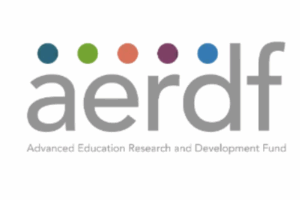Ethics & Policy
Responsible AI Starts With Responsible Leadership

Responsible AI starts with responsible leadership.
getty
As organizations race to adopt AI, it’s easy to focus on the technology. The models, the data, the infrastructure. But the real question isn’t “Can we build this?” It’s “Should we?” And that’s not an engineering decision. It’s a leadership one.
Ethics in AI isn’t a checklist to complete or a compliance box to tick. It’s a mindset that must be modeled from the top and embedded throughout the organization.
Why Leadership Sets the Tone for Responsible AI
How leaders talk about AI matters. But more than that, how they act sets the standard. Remember, actions speak louder than words.
When AI is framed purely as a tool to boost productivity, teams follow suit. They chase outputs. Automate fast. Optimize without pause, and sometimes without even thinking. But when AI is positioned as a powerful force that demands ethical awareness and thoughtful oversight that changes everything. Conversations begin to shift from just asking what we can build to asking what we should build and why.
Transparency stops being an external marketing campaign and starts becoming a culture internally. Leaders who speak candidly about AI and about what it can and should do, give their teams permission to question and to flag concerns before damage is done.
Risk tolerance evolves, too. It’s no longer about playing it safe or pushing the limits blindly. It’s about making informed, values-driven decisions. Always go back to asking what real business problem you’re trying to solve.
And governance? It doesn’t live in a binder on a shelf. It lives in behavior. Frameworks and policies are important, but they only stick when leadership brings them to life. Responsible leaders don’t just sign off on policy but actively show up and live it.
What Responsible Leadership Looks Like in Practice
So, what does it really mean to lead responsibly when AI is part of the equation?
For starters, you need to ask different questions. Not “How fast can we automate this?” but first “Should we even be doing this process?” If the answer is yes, then you need to ask “If we automate this process, what happens next?”
You stop treating AI like siloed department-owned projects. AI touches everything. That means legal, compliance, IT, engineering, marketing, product, operations all need to be in the room, not just looped in later. Responsible leaders are the ones making sure those voices aren’t just invited, but heard.
And then there’s trust. Short-term wins are tempting. The flashy pilot project. The press release. But the leaders who build something that lasts? They put trust and integrity at the center.
How to Build a Culture of Responsible AI from the Top Down
Creating a responsible AI culture isn’t accidental. It requires intentionality and investment starting with leadership. So, how do you get started building this culture?
Start with education. Executives don’t need to be data scientists or engineers, but they do need AI literacy. This means understanding what AI can and can’t do, how models behave at a high level, and where bias can creep in. Understanding this is non-negotiable.
Establish clear ethical frameworks. Define what responsible AI actually means for your organization. Create guidelines that are actionable. Make sure these frameworks aren’t sitting in a binder on a self. Share them, talk about them, and revisit them often.
Back it up with sponsorship. Responsible AI needs executive champions who fund the work, remove roadblocks, and model the behavior they want to see.
AI is having a transformative impact reshaping industries, redefining roles, and accelerating innovation. But it also carries risk, complexity, and potentially unintended consequences. Navigating this space responsibly starts with leadership. Because the future of AI will not just be shaped by what we build, but by how we lead.
Ethics & Policy
‘Gehraiyaan’ director generates new AI-based car chase as filmmakers divided on ethics- The Week

The arrival of artificial intelligence in cinema has not just opened new creative frontiers, but it has also unsettled the foundations of how stories are conceived, shaped, and shared.
From generating hyper-realistic sequences that once demanded months of location scouting, elaborate sets, and sprawling crews, to assisting in script revisions within hours, AI is rapidly altering the grammar of filmmaking.
In one recent experiment, filmmaker Shakun Batra worked with a team of collaborators to explore how AI could function in this area. The project, structured as a series of short visual pieces across genres—from action and drama to sci-fi and comedy—was designed to test whether advanced tools like video-generation and AI-assisted editing could help filmmakers imagine scenes that were previously limited by budget or logistics.
Batra, known for his intimate yet layered narratives through his previous work, such as Gehraiyaan, which Deepika Padukone and Siddhant Chaturvedi helmed, recently created a whole car chase sequence entirely through AI.
“We were able to explore scale, energy, and movement in a way that would have required months of planning and a massive crew otherwise,” he says. “But what stayed with me wasn’t just the visual achievement—it was the shift in process. We were working more like composers or designers—quickly iterating ideas, testing pace and mood in near real-time.”
The first experiment in the series, a high-octane chase titled The Getaway Car, gave him the chance to try something he had never attempted before. “For many independent artists, it can be challenging to produce such ambitious, dynamic concepts due to logistical and budget constraints,” he notes. “This is where technology can step in to open new avenues for visualising and iterating complex ideas.
Rough edges and all, it was one of the most freeing creative experiences I’ve had. It’s not perfect, but it’s a glimpse of what’s possible when curiosity leads the way,” Batra tells THE WEEK in an interview.
Script writer and conceptualiser, Shruti Srivastava, agrees. “It’s a complete burst of ideas and concepts that AI leads to, which makes it so exciting to work with. As filmmakers, I think we are just about starting on exploring the many possibilities that we will see in the time to come,” she says.
For Batra, the promise of AI lies not only in efficiency but in its potential to democratise the medium. “As the tools become more accessible, I feel like those of us with experience need to step into more of a guiding role,” he notes. “Access is step one. But making something meaningful still takes intent, and perhaps part of our responsibility is helping others develop that sense of intent in this new landscape.”
Filmmakers of today view AI less as a threat to artistic integrity and more as a way to rethink the creative process. If used right, AI doesn’t reduce creativity; it liberates it. While the tools generate visuals, it’s the filmmaker’s choices that give them meaning. “In a world of endless generation, the artist’s role in curating what matters becomes even more important. Even a student in a small town, with a story and a vision, can now produce sequences that used to require studio-scale resources,” adds Srivastava.
AI’s presence in the industry has also forced conversations around authorship, ethics, and credit. If a director uses an AI tool trained on thousands of hours of another artist’s work, who owns the final image? Batra doesn’t pretend to have definitive answers. “These are big questions—who gets credit, who gets paid, what does authorship even mean now? If someone’s voice or visual style helped train a model, shouldn’t they be acknowledged? We need frameworks that are transparent and fair.”
Looking ahead, industry experts believe that the most urgent debate is not technical but philosophical. “Just because we can make things faster or bigger doesn’t mean we should stop asking: what are we really trying to say? And who gets to say it?” says Nachiket Nanda, who’s learning filmmaking with AI in a mass communication college in Mumbai.
Interestingly, AI can analyse audience preferences, simulate locations, or even generate first drafts of scripts. The challenge then for the industry will not just be mastering the technology but mastering how to live with it. Or, as Batra puts it, “We need to make sure we’re not just making more movies, but making movies that still matter.”
Ethics & Policy
Digging Deeper | Sarah Barnbrook talks AI ethics

Podcasts
Digging Deeper | Giving the gift of life
On the latest episode of Digging Deeper, Shepparton News journalist Bree Harding speaks to Dean Gladigau about his wife, Karen, who donated her organs after she died of motor neurone disease last year.
By Bree Harding
Ethics & Policy
Investing in AI Ethics and UBI as the Workforce Transforms

The world is on the brink of a seismic shift in how we define work, wealth, and well-being. Artificial intelligence is accelerating automation at a pace that outstrips even the most optimistic projections, displacing jobs in sectors from customer service to manufacturing. Yet, amid this disruption, a new economic paradigm is emerging: universal basic income (UBI) and AI ethics frameworks. For investors, this isn’t just a societal debate—it’s a goldmine of opportunity. The companies and organizations leading this transition are not only shaping the future but also building the infrastructure to sustain it. Let’s break it down.
The UBI Revolution: Who’s Funding the Future?
Universal basic income is no longer a fringe idea. It’s a tested, scalable solution to the existential threat of job displacement. OpenResearch, a nonprofit backed by Sam Altman (OpenAI’s CEO), has been at the forefront of UBI experimentation. Since 2020, its pilot program has provided $1,000 monthly payments to 1,000 low-income individuals in Illinois and Texas. The results? Recipients use the cash to stabilize their lives, invest in education, and even start businesses. Crucially, the program hasn’t discouraged work—it’s empowered people to pursue opportunities they previously couldn’t afford.
Altman’s bet on UBI isn’t just altruistic—it’s strategic. As AI reshapes the economy, OpenAI is positioning itself as a thought leader in the ethical deployment of technology. For investors, this means OpenAI (and its parent company, Microsoft) isn’t just a tech play—it’s a gateway to the UBI ecosystem. Microsoft’s recent investments in AI ethics tools and its partnership with UNESCO’s Women4Ethical AI initiative further cement its role in this space.
AI Ethics: The New Compliance Gold Standard
The rise of AI isn’t just about efficiency—it’s about accountability. The EU AI Act, now in effect, mandates strict transparency, bias detection, and human oversight for high-risk systems. Companies that ignore these rules will face penalties; those that lead the charge will dominate.
Take Tesla, for example. Elon Musk, a vocal UBI advocate, has long warned about the need for a safety net in an AI-driven world. Tesla’s recent pivot to AI-powered manufacturing and its investments in humanoid robots (Optimus) position it as a key player in the automation economy. But Musk’s vision isn’t just about robots—it’s about redefining labor. Investors should watch Tesla’s stock closely as it navigates the intersection of AI ethics and UBI advocacy.
Meanwhile, United Way Bay Area and Sacramento’s Creative Growth Fellowship are proving that UBI isn’t just for survival—it’s a catalyst for creativity and entrepreneurship. These programs, funded by a mix of philanthropy and corporate partnerships, highlight the growing role of private capital in social equity. For investors, this means opportunities in impact-driven tech and infrastructure.
The Ethical Edge: Why This Matters for Your Portfolio
The companies leading the UBI and AI ethics charge are not just avoiding regulatory pitfalls—they’re creating new markets. Consider the $2 trillion U.S. Sovereign Wealth Fund, a government-corporate hybrid designed to fund infrastructure, AI, and potentially UBI. This fund, modeled after Norway’s success, could become a long-term revenue stream for guaranteed income programs. Investors who align with this vision—through sovereign wealth fund-related stocks or AI-focused ETFs—stand to benefit as the UBI model scales.
But don’t ignore the human angle. The Women4Ethical AI platform, backed by UNESCO, is addressing gender bias in AI development. Companies that prioritize diversity in their AI teams (like Microsoft and IBM) are not only doing the right thing—they’re future-proofing their products.
Risks and Realities: Is UBI a Panacea?
Critics argue UBI alone can’t solve systemic inequality. A 2023 OpenResearch study found that while UBI covers basic needs, it doesn’t significantly boost employment quality or health outcomes. But this misses the point: UBI is a tool, not a silver bullet. It’s part of a broader strategy that includes retraining, healthcare access, and ethical AI governance.
For investors, the key is to diversify. Don’t bet everything on a single UBI pilot. Instead, look at the ecosystem: tech companies (Microsoft, Tesla), nonprofit innovators (OpenResearch), and policy-driven funds (U.S. Sovereign Wealth Fund).
The Bottom Line: Positioning for the AI Era
The future of work is here, and it’s being rewritten by AI. The winners in this new era will be those who embrace UBI and ethics as both moral imperatives and business strategies. For investors, this means doubling down on companies that are not just automating jobs but redefining them.
Action Steps:
1. Buy into the AI ethics leaders: Microsoft, Tesla, and IBM are building the frameworks that will govern the next decade of tech.
2. Support UBI pioneers: Consider impact funds or ETFs that include OpenResearch-backed initiatives or sovereign wealth fund-linked stocks.
3. Diversify with policy plays: The U.S. Sovereign Wealth Fund and state-level UBI programs are creating new asset classes.
The market is always ahead of the curve, and right now, it’s betting big on a future where AI and UBI coexist. Don’t be left behind—position your portfolio for the next industrial revolution.
-

 Events & Conferences3 months ago
Events & Conferences3 months agoJourney to 1000 models: Scaling Instagram’s recommendation system
-

 Funding & Business1 month ago
Funding & Business1 month agoKayak and Expedia race to build AI travel agents that turn social posts into itineraries
-

 Jobs & Careers1 month ago
Jobs & Careers1 month agoMumbai-based Perplexity Alternative Has 60k+ Users Without Funding
-

 Education1 month ago
Education1 month agoVEX Robotics launches AI-powered classroom robotics system
-

 Education1 month ago
Education1 month agoAERDF highlights the latest PreK-12 discoveries and inventions
-

 Mergers & Acquisitions1 month ago
Mergers & Acquisitions1 month agoDonald Trump suggests US government review subsidies to Elon Musk’s companies
-

 Jobs & Careers1 month ago
Jobs & Careers1 month agoAstrophel Aerospace Raises ₹6.84 Crore to Build Reusable Launch Vehicle
-

 Podcasts & Talks1 month ago
Podcasts & Talks1 month agoHappy 4th of July! 🎆 Made with Veo 3 in Gemini
-

 Podcasts & Talks1 month ago
Podcasts & Talks1 month agoOpenAI 🤝 @teamganassi
-

 Jobs & Careers1 month ago
Jobs & Careers1 month agoTelangana Launches TGDeX—India’s First State‑Led AI Public Infrastructure



















